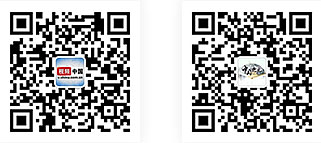水果的自白:我的家鄉在中國
今年中國國慶檔電影《我和我的家鄉》上映8天票房便突破18億,成為票房冠軍。金秋時節,碩果的飄香是讓遊子魂牽夢繞的家鄉味道,而眾多源自中國的水果,也在講述著自己的家鄉故事。
"My People My Homeland" released on China’s national day has raked in 1.8 billion yuan in just eight days, smashing box office records. In the golden autumn season, the fragrance of fruits reminds people of home and haunts their memories. Many fruits from China are telling stories of their hometown.

“橘生淮南則為橘,生於淮北則為枳”,這句話出自戰國末期的一篇散文。據史料記載,中國自漢代起就有“橘官”,專門負責管理橘園和公田。著名詩人杜甫還曾在夔州(今重慶奉節一帶)做過近兩年的橘官,在那裏留下了430余首佳作。據考證,直到西元1471年,橘、柑、橙等柑橘類果樹才從我國傳入葡萄牙裏斯本,至今,橘子在荷蘭和德國都還被稱為“中國蘋果”。
"Tangerine is called Ju in the south of Huai River Huai and Zhi in the north of Huai River. This sentence is part of an essay written in the late Warring States Period. According to historical records, "orange officers" existed in China since the Han Dynasty and were tasked with the management of orange orchards and public fields. Du Fu, a famous poet, once worked as an orange officer in Kuizhou (now Fengjie area of Chongqing) for nearly two years, initiating more than 430 excellent projects there. According to research, it was not until 1471 AD that tangerines, oranges, mandarin oranges and other citrus fruit trees were introduced to Lisbon, Portugal. Even now, oranges are known as "Chinese apples" in Holland and Germany.

“柿”在中文裏諧音“世”“事”,中國古人常常將飽含喜慶吉祥的寓意融入其中,如“四世同堂”“事事如意”等。據史料記載,柿子原産自中國長江流域及西南地區,距今已有三千多年的栽培史。日本人對柿子情有獨鍾,在吉野市建立了世界上最早的柿子博物館,但其實柿樹于唐代才從中國傳入日本;美國1863年才從東方國家引入柿種。
"Persimmon" is a homonym for "generation" and "event" in Mandarin. Ancient Chinese often understand it to denote happiness and auspiciousness with meanings such as "four generations at the same time" and "everything goes well". According to historical records, persimmon originated from the Yangtze River Basin and southwest China, where it has been cultivated for more than 3,000 years. The Japanese love persimmons and set up the world's earliest persimmon Museum in Yoshino City. However, persimmon trees were introduced to Japan from China in the Tang Dynasty and persimmon species were introduced from eastern countries in 1863 to the United States.

獼猴桃沒有橘、柿子那麼幸運,經常被認錯國籍。1904年,獼猴桃被前來中國探親的教師伊莎貝爾帶回紐西蘭,經歷多次改良,最後種植成功。因多毛的外表與顏色形似紐西蘭國鳥奇異鳥,因而得名“奇異果”。但早在1200多年前,中國大詩人岑參就曾把獼猴桃寫進詩裏:“中庭井闌上,一架獼猴桃。石泉飯香粳,酒甕開新槽。”在2008年舉行的國際獼猴桃大會上,全球19個國家200多位專家一致認定:獼猴桃的原産地是中國湖北省宜昌市。
Kiwi fruit is not as lucky as tangerines and persimmons and its identity and nationality is often mistaken. In 1904, kiwi fruit was brought to New Zealand by Isabel, a teacher who returned from visiting relatives in China. After experimenting with several methods, the kiwi fruit was finally planted successfully. It got its name because of its hairy appearance and color which resembled a kiwi, the national bird of New Zealand. But as early as 1,200 years ago, Cen Shen, a great Chinese poet mentioned about the kiwi fruit in his poem: "There is a kiwi at the end of the courtyard well. Rice made by Shiquan spring is fragrant and the wine jar has a new slot. " At the international kiwi fruit conference held in 2008, more than 200 experts from 19 countries all over the world agreed that the origin of kiwi fruit was in Yichang City, Hubei Province, China.

中國地大物博,物産豐富。新疆的哈密瓜、甘肅的人參果、浙江的楊梅、長三角的水蜜桃、嶺南的荔枝……年復一年生長,春華秋實豐登,萬紫千紅綻放,這大概就是中國水果“秀家鄉”的方式,不管生長在哪片土壤,不管日日夜夜經歷哪些風霜,不管離鄉、回鄉、離別、重逢,總能散發沁人心脾的果香,綻放酸甜可口的滋味,滿足著人們的味蕾的同時,讓人想起家鄉的味道。
China has a vast territory and abundant resources. It’s the land of Xinjiang Hami melon, Gansu ginseng fruit, Zhejiang bayberry, Yangtze River Delta peach and Lingnan litchi. Growing year after year, the fruits flower in spring and bear produce in autumn. With their bright hues and rich aroma, they capture the essence of where they are grown. No matter what soil they grow in, what kinds of wind and frost they are exposed to and whether they grow in their hometown or in an alien land, their fragrance remains the same, their sweet and sour taste intact. Each flavour is tinged with nostalgia, recalling with each bite, the memory of time gone by.
